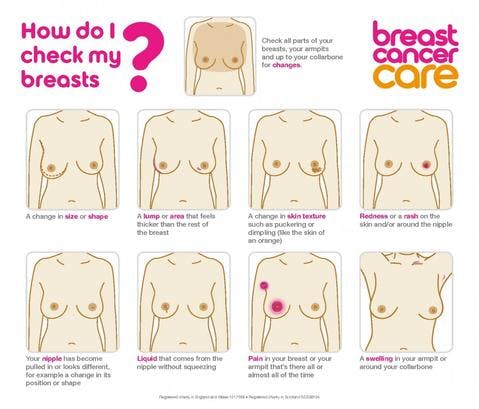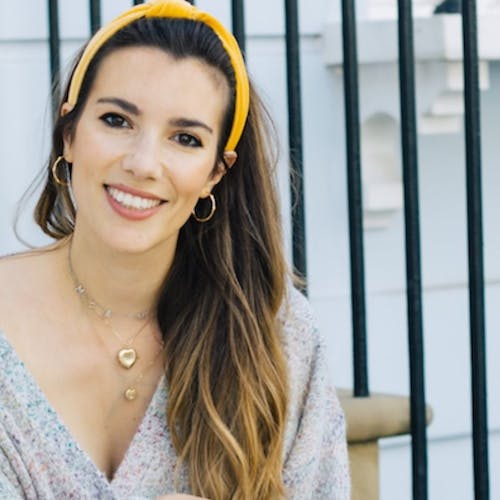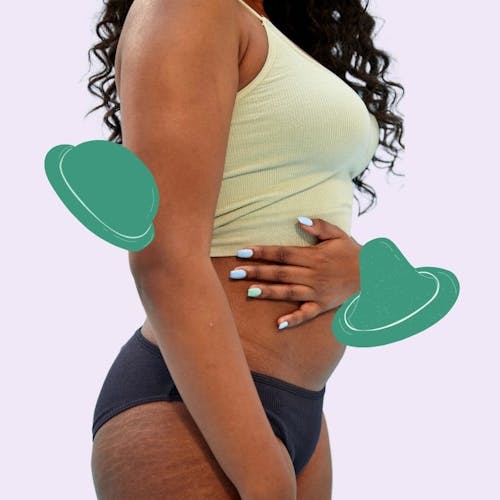This website uses cookies to enhance the user experience. By using Yoppie you are agreeing to our use of cookies.
Boob Check 101: An Easy Guide To Your Breast Health
Written by Yoppie
08 Sep 2020
Why we need to check
How to check your boobs
What to look and feel for
What to do if you find something
What happens at a breast exam
Boobs, glorious boobs! They come in all shapes and sizes, and whether you love yours or not, breast health is important. Sure, they can sometimes feel like two useless bags of sand hanging from our chest (tell that to a newborn!) but it’s vital that we check on them regularly to ensure nothing is abnormal.
Why we need to check
Boobs tend to feel squidgy and soft, but this depends on where you are in your cycle; certain times of the month can bring breast tenderness, swelling, and the occasional lump.
Don’t. Freak. Out. The word lump can make anyone’s eyes widen, but when these occur as part of your typical cycle, they’re usually nothing to worry about. What you need to watch for are lumps and other symptoms that don’t follow the usual pattern.
Breast cancer is the most common cancer in the UK. According to Breast Cancer Now, 1 in 7 UK women will develop breast cancer in their lifetime. Your chances tend to depend on your age, as most cases (8 in 10) are diagnosed in women over age 50. That said, 4% of cases are found in women under 40, so it’s important to get checked at any age.
It’s helpful to keep in perspective that almost 9 in 10 (87%) of women who suffer from breast cancer will survive for 5+ years, and UK survival rates doubled over the last 40 years thanks to improved treatments and - the key - early detection. And how do we detect early? Regular boob checks, of course!
How to check your boobs
Breast self-examinations may seem confusing if you don’t know what you’re looking for, but regularity is key. The more you check, the more likely you are to catch any changes in the look and feel of your breasts before anything sinister has time to develop.
Make a mental note to check at least once a month. Here’s how:
- Look straight on in the mirror (hands on hips) and scan for dimpling/puckering/bulging skin, changes to the nipple, or redness/rashes/swelling
- Raise your arms above your head and look again for the same things
- Lean forward so your boobs hang away from your chest and look again
- Check for nipple discharge. This could be either blood or a watery, milky or yellow fluid leaking from one or both nipples
- Lie on your bed and feel your left breast with your right hand, and vice versa. Keep your four fingers flat and use them to firmly massage in circular motions around each breast, up to the collarbone, down to the top of your abdomen, and into your armpit and cleavage. You’ll need to press more firmly to reach deeper tissue in the centre.
- Do the same again, but this time while standing or sitting upright in a chair.
If you’re a visual person, this graphic from Breast Cancer Now (formerly Care) may help.

And this video from Babylon Health gives a quick guide (less than 2 minutes) to checking your boobs properly and covering all areas.
What to look and feel for
Breasts are generally fleshy and a bit lumpy anyway, so it’s difficult to tell if you’re feeling something normal, a lump due to hormonal change, or something that needs checking. In general, always get lumps checked. Some lumps to feel for are those that:
- are particularly hard
- are painless to squeeze
- have irregular edges
- don’t move when pushed
- appear in the top outer part of your breast
- get bigger over time
The above are the most common criteria but don’t discount a lump if it doesn’t have one or more of these characteristics: if in doubt, always check it out.
Some other things to look out for are:
- Nipple discharge
- One breast getting suddenly bigger than the other
- Changes in the outline/shape of breast
- Pain in the breast that doesn't go away with your hormone cycle
- Skin changes
What to do if you find something
Getting checked is of the utmost importance, but keep in mind that finding a lump or abnormality is more than likely going to be fine - according to NHS statistics, 9 out of 10 breast lumps turn out to be benign (non-cancerous).
Never, ever be embarrassed to get a lump or abnormality checked by your GP. Early detection is incredibly important, so book an appointment ASAP. Like, now. Not next month.
What happens at a breast exam
An initial breast exam with your GP isn’t exactly pleasant, but it’s usually pain-free and over in a few minutes. An appointment usually involves answering questions about your symptoms, past medical history, medication, any surgery, and family history of cancer, followed by an exam that’s similar to the self-exam described above.
To rule out cancer, your GP may refer you to the breast clinic for further tests such as repeat examination, imaging (via an ultrasound scan or mammogram) and in some cases a biopsy (where a needle extracts a sample of the lump). But don’t worry, these are all routine checks and being referred to the breast clinic is pretty normal, and usually just to be on the safe side.
When was the last time you checked your breasts? If you have any questions please don’t hesitate to get in touch over on Instagram at @itsyoppie! Between boobs and bums and everything else, you've got enough going on each month so don't forget that our personalised period subscription box can get organic cotton tampons, PMS supplements, and much more, delivered through your letterbox. That's a few less things to worry about each cycle.
Fact checked by Doctor Samantha Miller.
Section jump
Back to top
Subscribe To Our Newsletter
YOPPIE





© 2025 Yoppie is a registered trademark of Phlo Technologies Ltd.
Yoppie's supplements are not a substitute for a varied diet and healthy lifestyle and are not intended to diagnose, treat, or cure any disease. If you are pregnant, breastfeeding, have a medical condition or are under medical supervision, please consult with your doctor before taking any of our products.






